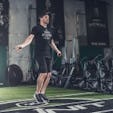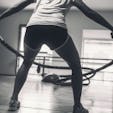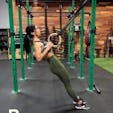The Onnit Academy brings together the best fitness experts from all over the world, and if you can’t be here to learn from them in person, using this website is the next best thing.
In an effort to help you become better acquainted with our Academy Master Trainers and the unique skills they offer, we’re going to introduce you to them one at a time.
In honor of “Battle Rope Week” here at the academy, we’re extremely proud to bring you the following interview with Onnit’s Master Battle Rope Trainer, Marine and Iraq War veteran Aaron Guyett. A decorated hero, Guyett is dedicated to popularizing ropes as being a versatile tool for training all aspects of fitness and performance. Check out his workout videos on our On Demand channel, and keep an eye out for the Battle Rope Certification Guyett teaches, coming to a city near you.
Meet Aaron Guyett

Age: 35
Height: 6’0”
Weight: 195 pounds
Hometown: Post Falls, ID/Costa Mesa, CA
Years training: 22
Fun Fact: “I’ve been a doomsday prepper since before prepping was cool. When I was a kid I had a get-out-of-Dodge pack ready in my closet just in case shit hit the proverbial fan. I had twine, a compass, a blanket, Swiss Army knife, first aid stuff… I’ve been ready for the end ever since” [laughs].
Onnit: How did you get interested in fitness?
Guyett: I wanted to get better at sports—soccer, hockey, football, wrestling. I knew that having a lot of aerobic capacity would be helpful. As a kid, I ran for fun in the mountains of Idaho. I was also scrawny and wanted to put on weight when I was young, so I ate a lot of crap and lifted as hard as I could. When I joined the Marine Corps I got smarter with my lifting and eating.
When did you join the Marines?
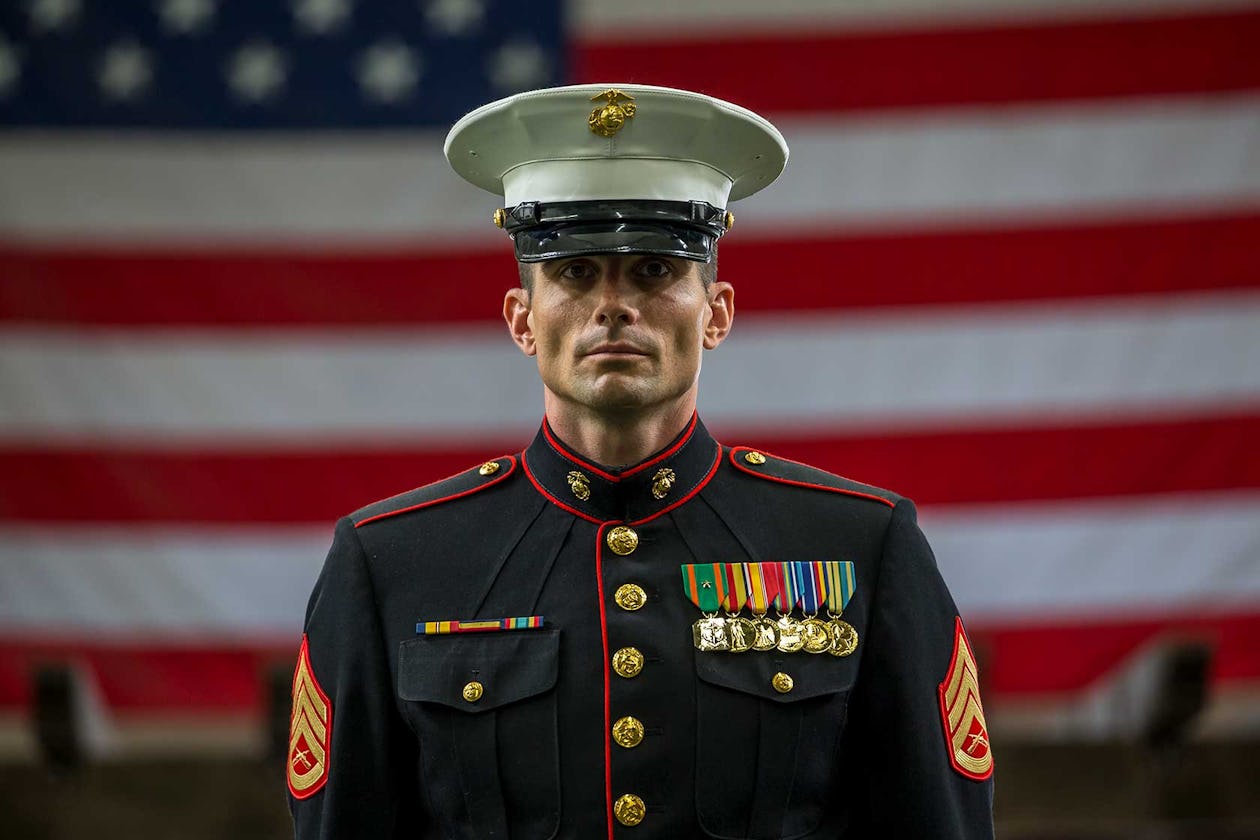
I was 18. As a kid, I would always pretend I was a soldier, and when I found out the Marine Corps was the hardest branch of service, I thought, “I’m going to do that.” In 2003, I was deployed to Iraq, near Baghad. We were the tip of the spear, infantry. I did a bunch of security missions to and from Baghdad, bringing logistics supplies and personnel. I was in a bunch of battles and ambushes.
Can you tell us about it, without having to kill us after?
Sure. My baptism of fire was on the border of Kuwait and Iraq. We encountered artillery fire so we pulled back and reorganized. We got stuck outside of Basra and then we got ambushed—hit by two RPGs. One hit a vehicle that towed our tanks and another hit a five-ton truck and blew it up. I reacted like a machine. It was almost like I was watching myself do what I was supposed to do. I suddenly saw myself pulling the trigger on my gun. We started firing and moving forward, communicating with each other, just like we were trained to do. It finally hit me at that moment, “This is a battle. This is war.”
We thank you for your service. What medals did you bring home?
I’m still in the Corps, in the reserves now. I’m a staff sergeant for combat instructors at Camp Pendleton [in San Diego, CA]. I coordinate all the combat instructors in my unit to teach incoming Marines basic infantry skills—how to shoot, move, and communicate.
As for medals, I got three Navy Achievement medals. I was in the First Marine Division, meaning I was part of a group that made the cut for our unit to go over to Iraq first. We were the top Marines out of 25,000.
What was your physical training like in the Corps?
The Marines approach to training is pretty much the opposite of the Onnit Academy [laughs]. It’s all about grinding as hard as you can for as long as you can and hoping that your troops don’t get broken. But I learned a lot about mental toughness and how resilient the body is. We can push it a long way without it breaking.
At that time, I was getting my workouts from bodybuilding magazines and Marine Corps trainers who tried to smash me, making me run hundreds of miles and hike miles with a heavy pack on. Half the time I had access to a gym and half the time not. Out in the field we did pushups, situps, lifting up our packs, running with heavy loads, and lifting with tools we had in our Humvee. I was into bodybuilding and often ended up doing curls and extensions with sandbags. I got a lot stronger because I had to manage those awkward loads. In that sense, I found my way into the unconventional training realm by accident.
It wasn’t until I got out of the Corps that I discovered a safer and more productive path to fitness—having high-intensity days, low-intensity days, and moderate days, instead of all high-intensity days. I started investing in education, certifications. With every workshop, summit, and expo I could find, I voraciously devoured all the information out there.
How did you get into the fitness industry?
I got out of the Corps and thought I’d relax for a while, and then I realized I don’t know how to relax [laughs]. I got a job at a cancer lab running logistics and rose to a management position, but an office job wasn’t for me. I was training people on the side and figured I could be good at anything I put my mind to and wanted to do something I enjoyed, which was helping people be better versions of themselves.
I became a trainer at an LA Fitness and I cold-called thousands of members trying to get private training clients. I was able to build a sizable clientele. I went through hundreds of “no’s” to get one “yes” but I learned a lot about people and communication. I started my company, Innovative Results, in 2005 with one client. Now I have a huge facility in Costa Mesa with a climbing wall, jungle gym, and open turf, and I train 250 clients.
When did you first discover battle ropes?
In 2010, a trainer named John Brookfield taught a level-one cert for battle ropes at my gym. His work capacity was just incredible, and he can bend a half-inch iron rod into a circle, rip decks of cards in half—he’s an animal. I was sold. Battle ropes improve all the metabolic pathways, aerobic and anaerobic.
What makes battle ropes unique for training?
They make you think about force differently. Normally, we think about load as an amplification of gravity when we think about a kettlebell, dumbbell, or barbell. With the rope, gravity plays a role, but the load is created through the frequency or lack of frequency in the movement of the rope. As much force as you put into it is what it’s going to exert back on you.
Ropes allow you to do up-and-down, side-to-side, or circular movements that create tension between the anchor point and your body. That tension is the force that’s making the muscle adapt—you don’t have to be stuck in the gravity-ground relationship. If you’re using a barbell, you can’t move around much and create force at the same time. You’ll get injured. But with a rope, I can have a fighter work his upper body by doing, say, alternating waves, while his legs move laterally, which will mimic some of the same positions he’ll find himself in during a fight. That’s hard to coordinate—to throw a powerful punch and change position on an opponent at the same time—but with the rope I can train it. With most other pieces of equipment, it’s going to be harder. I’d have to train those two components separately.
Most think of ropes as a tool for cardio. What else can we use them for?
Ropes provide a great way to get top-end power like you would doing a one-rep max in barbell lifts like the squat or snatch. But unlike with the bar, there’s a very nominal risk of injury. If your form breaks down on a max with a barbell, your risk for injury increases enormously because of the weight involved. If you screw up with the rope, the exercise won’t be effective but it won’t hurt you. My clients aren’t afraid of the rope like they are a bar.
Here’s something you could do: create a lot of slack in the rope and then slam it hard and fast enough that you can put three waves in it that run all the way to the anchor point. You’re going to have to generate a ton of power to do that—triple extension—just like you would in a clean or snatch.
Or how about doing a jump squat rope slam rather than a snatch? It’s much less complex than teaching a barbell snatch. With the rope I can just say to a client, “Keep a long spine, proud chest, and abs engaged. Jump as high as you can and slam the rope down as hard as you can.” Do that for 10 seconds and take 50 seconds off and repeat for 10 rounds.
For strength, I like the endless rope pull. Loop the rope a couple times around the anchor and pull it so all that friction around the anchor makes it feel like you’re a sailor pulling on a winch. That’ll work your back and arms. There were no overweight sailors [laughs], and Popeye was strong as hell. That’s how he got those forearms.
You can also lift the rope as a static object. Grab an end in each hand and press overhead with it while the middle is attached to an anchor point. The rope will try to pull your arms forward and you’ll have to fight to keep your scaps engaged. It’s great for overhead mobility. You could also do a Turkish getup with it, or run resisted sprints using it as a harness that holds you back.
For conditioning, I love making alternating waves or lateral waves for five or 10 minutes straight. People do a lot of sagittal plane work in the gym—moving forward and back or up and down—so the lateral and rotational planes are important to hit to balance everything out, and ropes are perfect to do that. Lateral and rotation movements enable the joints to recover because they decompress tension in the vertebrae and the hips.
What should we look for in a rope?
You want a durable rope. To be honest, at first I didn’t like the polypropylene material of the Onnit ropes, but then I started using them outside on the beach. I realized that I couldn’t take the older nylon ropes I had outside. They would get sand in them and grass and dirt, which starts taking the rope apart. The Onnit ropes, I can take them anywhere and they last.
I recommend that beginners get a 50 foot-long rope, an inch-and-a-half thick. It’s challenging for a beginner to make waves with that rope and get them all the way down to the anchor point. That will motivate you to get more efficient and stronger and a little more coordinated. You can graduate from there to a two inch-thick rope. That half-inch more of girth creates a whole new dynamic.
That’s what the ladies tell us¦ Wait, what were we talking about?
Battle ropes!
Right. Sorry¦ Let’s talk about programming rope exercises. How do you choose sets and reps, or work periods, to achieve different goals?
For power, you want to work for no more than 10 seconds. For every second of work you do you need five seconds’ rest. For strength, muscle hypertrophy, and building the lactic threshold, you need to work for no less than 20 seconds and no more than 2 min. I like a 1:1 work-to-rest ratio, or 1:2. For conditioning, work for two minutes and beyond. Or, you could do the work-to-rest ratio lopsided, working for five seconds and resting one, and repeat that for rounds. That builds efficiency with oxygen exchange.
For a general fitness client, I’ll do one day of power training with the rope and the next workout will be low and slow—like jogging. We just keep the rope moving for a long period of time at a light pace.
For maximum fat loss, I keep people mainly in the hypertrophy zone because increasing the metabolic rate is the fastest way to lose weight. Because clients usually think they need to sweat and breathe heavy to burn the most fat, I finish the session with the kind of traditional, high-intensity finishers that we see people use the rope for more often. You have to appease their psychology. If they think sweating more and breathing heavier is the way to lose body weight, so be it, but increasing lean body mass and coupling that with solid nutrition is going to work best.
Do you use battle ropes exclusively with some clients?
No, but you certainly can. If I were a Bootcamp coach, all I’d do is ropes. They’re easy to carry around. They’re social, because you can have one person working on each end, and you can train every metabolic pathway.
Any tips to safely anchor the rope?
The anchor should not have sharp edges. The best circumference is four inches. Two inches or less puts extra stress on the rope strands. Cap the top of your anchor point or have the anchor go up as high as you can, like a power rack, so the rope doesn’t slide off it. If you’re tying a single length of rope onto an anchor, use a figure-eight knot.
How did you come to the Onnit Academy?
[Onnit Chief Fitness Officer] John Wolf invited me out to the Foundations cert and afterward asked me to be a Master Coach for battle ropes. I got John Brookfield’s blessing and away I went.OK, now for some fun questions. What’s your favorite movie?
Fight Club. There’s a deep part of me that wants a big re-set in the world. I would never wish for destruction, of course, but I like the idea of correcting the corruption and consumerism in our culture. I’m about brotherhood, values, virtue, and doing hard things.
Favorite book?
I read about a book per week. Recently, I read Legacy, about the New Zealand rugby team the All Blacks, who are maybe the winningest sports team of all time. It’s about how to create a legacy like theirs.
Favorite moment in sports?
I don’t watch sports. I don’t even have a TV, which makes it awkward for me as a male in America [laughs]. So I guess my favorite sports moment is a little unusual. When I was a kid I went to a 49ers game. They were playing the Bears. Some girl in the stands spit her gum at Mike Ditka, and without any hesitation, Ditka spit his back on her and it landed right in her hair! She had to cut it out with scissors. Nothing to do with sports but I thought that was classic [laughs]. The 49ers won.
You created a character that is now infamous on Youtube. Who is “The Naked Sailor?”
So my mom broke her back riding a horse. She was taking a jump and the horse didn’t jump—but my mom did. She got up, walked the horse back to the stable, drove home, and then realized she couldn’t get out of her car. That should give you an idea of where my toughness came from.
She asked me for some exercises she could do to rehab her back. She was really depressed because she always wants to do stuff and suddenly couldn’t. So I made her a funny video wearing neon-colored wristbands, a crop-top T-shirt, and a sailor hat and acted a fool while I was demoing some exercises. I put it on Youtube because that was the easiest way she could see it. I kept making videos, shirtless and in tight shorts, because I thought they might be a good promotional tool—there was some shock value but also information. That was the concept of The Naked Sailor, who’s all about training with basically nothing—whatever you had around your house.
I became a Youtube sensation, not so much because of the workouts I was offering but because I developed a huge gay following [laughs]. Some people thought it was very tantalizing; I still get messages about it. But that gig’s over because I have a wife and kids now.
Incidentally, my mom is doing fine today. She’s still doing some of those exercises that started it all [laughs].
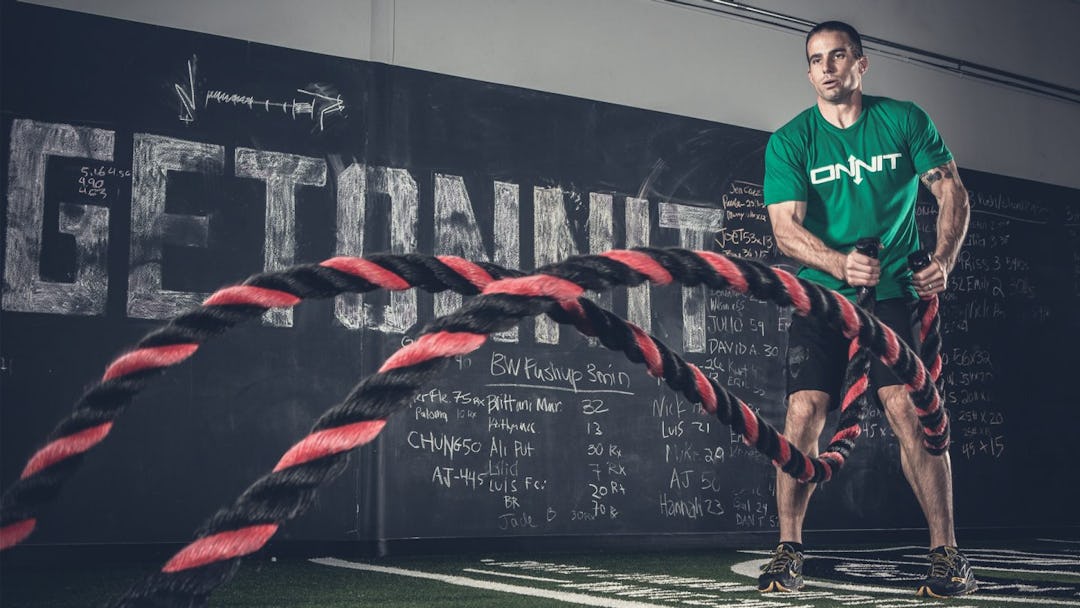
)

